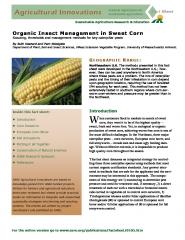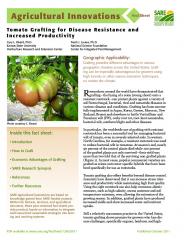Solanum lycopersicum, Tomato, is a species belonging to the Solanaceae family that originated in Central and South America and now grown worldwide for its edible fruits. It is perennial in its native habitat but grown as an annual in temperate climates, usually growing about 3 m in height. It is covered with fine short hairs. The leaves are compound, odd pinnate, with five to nine leaflets on petioles. The flowers are yellow in cyme inflorescence. The fruits are classified as berries. Tomato fruits can be used for first aid treatment for burns, scalds, and sunburn. Root decoction is ingested for relief from tooth pain. Tomatoes are rich in lycopene, a substance with beneficial effects on the heart and prostate. It is also used for rheumatism and headaches.Tomato fruits are consumed in many various ways and forms, either raw or cooked. It can also be made into juice, or dried and ground into a powder. The seeds yield edible oil. The oil can also be used in making soap. Tomato leaves can be made into a spray as an effective insecticide.
Solanum lycopersicum is a ANNUAL growing to 2 m by 1.5 m at a fast rate.
It is hardy to zone 10. The flowers are pollinated by Insects. The plant is self-fertile.
Suitable for: light , medium and heavy soils and prefers well-drained soil. Suitable pH: acid and neutral soils and can grow in very acid soils.
It cannot grow in the shade. It prefers moist soil.
A plant of the tropics, it is also widely cultivated in the subtropics and temperate zone . In the tropics it can be grown at elevations from sea level up to 2,000 metres, but generally fruits better above 1,000 metres. It grows best in areas where annual daytime temperatures are within the range 20 - 27°c, but can tolerate 7 - 35°c. It prefers a diurnal temperature variation of at least 5 - 6°c. The plant cannot tolerate frosts. It prefers a mean annual rainfall in the range 600 - 1,300mm, but tolerates 400 - 1,800mm. High rainfall and high relative humidity adversely affect growth. Requires a fertile, humus-rich, well-drained soil in a warm sunny position. Slightly acid conditions, with a pH in the range 5.8 - 6.8, are preferred, though the plant can tolerate 5 - 7.5. Yields of ripe fruit from upright forms of the plant can commence 2 - 3 months after sowing the seed;other forms might take 4 - 5 months. Yields of 15 tonnes per hectare can be obtained. Yields are mainly between 20 - 40 tonnes per hectare, but yields up to 150 tonnes have been recorded. There are many named varieties and over the considerable period of cultivation by humans two distinct types have emerged. These are:- L. Esculentum cerasiforme A.Gray. This is the cherry tomato. Closer to the original species, it produces a large crop of small fruits with a delicious sweetness. L. Esculentum esculentum. This is the more commonly grown tomato with much larger fruits. There are a very large number of cultivars with a wide variety of colours and fruit shapes and sizes. This species hybridizes with the currant tomato , but does not hybridize with the wild tomato .
HabitatsNot known in a truly wild situation.Resources
01AGI2005
Agricultural Innovations
Sustainable Agriculture Research and Education Program
Organic Insect Management in Sweet Corn
Scouting, thresholds and management methods for key caterpillar pests
By Ruth Hazzard and Pam Westgate01AGI2005

Agricultural Innovations
Organic Insect Management in Sweet Corn
Scouting, thresholds and management methods for key caterpillar pestshttps://www.sare.org/content/download/5131/51232/file/01AGI2005.pdf01AGI200512AGI2011

A g r i c u l t u r a l I n n ov a t i o n s Fact Sheet
T o m a t o G r a f t i n g f o r \f i s e a s e R e s i s t a n c e a n dhttps://www.sare.org/content/download/64064/902160/file/12AGI2011.pdf12AGI201112AGI2011
A g r i c u l t u r a l I n n ov a t i o n s Fact Sheet
Sustainable Agriculture Research and Education Program
T o m a t o G r a f t i n g f o r \f i s e a s e R e s i s t a n c e a n d30. Production and postharvest activities for fonio

AgriGuide
E-TIC
E-TIC Sahel InfoHubs
Senegal and MaliInitiative de
Avec le soutien de
http://www.agriguide.org/agriguide/files/etic_agriguide_en_20120830.pdf30. Production and postharvest activities for fonio30. Production and postharvest activities for fonio
AgriGuide
Agriguide.orghttp://www.agriguide.org/agriguide/files/etic_agriguide_en_20120830.pdf
E-TIC
E-TIC Sahel InfoHubs
Senegal and Mali
Initiative de
Avec le soutien de
ICVolunteers
Major pests
- Acanthocoris scabrator
Acanthocoris sordidus
Acherontia atropos
Acherontia styx
Aculops lycopersici
Aecidium cantense
Agrotis exclamationis
Agrotis ipsilon
Agrotis malefida
Agrotis repleta
Agrotis segetum
Aleurotrachelus trachoides
Alfalfa mosaic virus
Alternaria brassicae
Alternaria brassicicola
Alternaria solani
Alternaria tomato
Alternaria tomatophila
Amaranthus albus
Amaranthus blitoides
Anomis flava
Anomis impasta
Aphis gossypii
Arvelius albopunctatus
Aspergillus niger
Aspisoma ignitum
Athelia rolfsii
Atherigona orientalis
Aulacorthum solani
Bactericera cockerelli
Bactrocera aquilonis
Bactrocera atrisetosa
Bactrocera cucumis
Bactrocera dorsalis
Bactrocera tryoni
Beet curly top virus
Bemisia tabaci
Bemisia tabaci
Bemisia tabaci
Berginus bahamicus
Botryotinia fuckeliana
Broad bean wilt virus
Cacoecimorpha pronubana
Candidatus Liberibacter solanacearum
Candidatus Phytoplasma solani
Cercospora canescens
Chaetocnema confinis
Chamomilla recutita
Chenopodium album
Chenopodium murale
Chinavia marginata
Chromatomyia horticola
Chrysanthemum stem necrosis virus
Chrysodeixis chalcites
Chrysodeixis eriosoma
Chrysodeixis includens
Circulifer tenellus
Clavibacter michiganensis subsp. michiganensis
Colletotrichum coccodes
Colletotrichum dematium
Columnea latent viroid
Commelina benghalensis
Contarinia lycopersici
Contarinia maculipennis
Cornu aspersum
Corynespora cassiicola
Corythaica cyathicollis
Cowpea mild mottle virus
Cucumber mosaic virus
Cyanthillium cinereum
Cyperus esculentus
Delia florilega
Diabolocatantops axillaris
Dickeya dianthicola
Didymella lycopersici
Digitaria ciliaris
Diodia teres
Diplosolenodes occidentale
Ditylenchus destructor
Drymaria cordata
Dysmicoccus neobrevipes
Dysphania ambrosioides
Echinochloa crus-galli
Edessa meditabunda
Eggplant mosaic virus
Emex spinosa
Emilia sonchifolia
Epilachna vigintioctopunctata
Epitrix cucumeris
Epitrix hirtipennis
Eragrostis cilianensis
Eudocima fullonia
Euschistus bifibulus
Euschistus conspersus
Euschistus variolarius
Feltia subterranea
Ferrisia virgata
Forficula auricularia
Frankliniella fusca
Frankliniella intonsa
Frankliniella occidentalis
Frankliniella schultzei
Fusarium oxysporum f.sp. lycopersici
Fusarium oxysporum f.sp. radicis-lycopersici
Galinsoga parviflora
Galinsoga quadriradiata
Gibberella fujikuroi
Globodera pallida
Globodera rostochiensis
Globodera tabacum
Glomerella cingulata
Golovinomyces orontii
Gonocephalum
Gryllotalpa gryllotalpa
Haematonectria haematococca
Haritalodes derogata
Helicotylenchus dihystera
Helicoverpa armigera
Helicoverpa assulta
Helicoverpa punctigera
Helicoverpa zea
Heliothis virescens
Heliotropium europaeum
Helminthosporium carposporum
Hemicycliophora arenaria
Hoplolaimus seinhorsti
Hortensia similis
Hydraecia micacea
Hypercompe icasia
Ipomoea triloba
Jacobiasca lybica
Keiferia lycopersicella
Lacanobia oleracea
Leptoglossus cinctus
Leveillula taurica
Liorhyssus hyalinus
Liriomyza sativae
Liriomyza trifolii
Listroderes costirostris
Lolium temulentum
Longidorus
Loxigilla noctis
Lygus hesperus
Macrophomina phaseolina
Macrosiphum euphorbiae
Mamestra brassicae
Manduca quinquemaculata
Manduca sexta
Melanoplus sanguinipes
Meloe americanus
Meloidogyne arenaria
Meloidogyne chitwoodi
Meloidogyne enterolobii
Meloidogyne ethiopica
Meloidogyne exigua
Meloidogyne floridensis
Meloidogyne hapla
Meloidogyne incognita
Meloidogyne javanica
Meloidogyne mayaguensis
Meloidogyne minor
Mimosa diplotricha
Mimosa pudica
Murdannia nudiflora
Myrothecium roridum
Myzus persicae
Nacobbus aberrans
Neoceratitis cyanescens
Neocosmospora falciformis
Neocurtilla hexadactyla
Neoleucinodes elegantalis
Nesidiocoris tenuis
Nezara viridula
Oligonychus pratensis
Olpidium brassicae
Orobanche
Orobanche aegyptiaca
Orobanche cernua
Orobanche ramosa
Paratrichodorus minor
Parietaria mottle virus
Parthenium hysterophorus
Passalora fulva
Peanut stunt virus
Pectobacterium carotovorum subsp. carotovorum
Pelargonium zonate spot virus
Pepino mosaic virus
Pepper golden mosaic virus
Pepper necrotic spot virus
Pepper veinal mottle virus
Peridroma saucia
Peru tomato mosaic virus
Phenacoccus solenopsis
Phoma andigena
Phoma destructiva
Phthia picta
Phthorimaea operculella
Phyllanthus urinaria
Phyllophaga
Phytophthora cactorum
Phytophthora capsici
Phytophthora cryptogea
Phytophthora infestans
Phytophthora megasperma
Phytophthora nicotianae
Phytophthora richardiae
Pilemia perusialis
Potato spindle tuber viroid
Potato virus X
Potato virus Y
Pratylenchus
Pratylenchus penetrans
Psara pallicaudalis
Pseudocercospora fuligena
Pseudococcus jackbeardsleyi
Pseudoidium neolycopersici
Pseudomonas corrugata
Pseudomonas marginalis pv. marginalis
Pseudomonas syringae pv. atrofaciens
Pseudomonas syringae pv. mellea
Pseudomonas syringae pv. syringae
Pseudomonas syringae pv. tomato
Pseudomonas viridiflava
Pseudoperonospora portoricensis
Puccinia pittieriana
Pyrenochaeta lycopersici
Pythium aphanidermatum
Pythium arrhenomanes
Pythium ultimum
Pythium vexans
Radopholus similis
Ralstonia solanacearum
Ralstonia solanacearum race 1
Ralstonia solanacearum race 3
Rhizobium radiobacter
Rhizobium rhizogenes
Rotylenchulus reniformis
Salsola vermiculata
Scapteriscus
Scapteriscus didactylus
Scapteriscus variegatus
Scirtothrips dorsalis
Sclerotinia sclerotiorum
Septoria lycopersici
Setaria viridis
Sibovia occatoria
Sida acuta
Solanum carolinense
Solanum nigrum
Solenopsis geminata
Sonchus asper
Sonchus oleraceus
Southern tomato virus
Spodoptera albula
Spodoptera androgea
Spodoptera dolichos
Spodoptera eridania
Spodoptera exigua
Spodoptera frugiperda
Spodoptera latifascia
Spodoptera littoralis
Spodoptera litura
Spodoptera ornithogalli
Spongospora subterranea f.sp. subterranea
Stegobium paniceum
Stemphylium lycopersici
Stemphylium solani
Stemphylium vesicarium
Synedrella nodiflora
Systena basalis
Systena s-littera
Tetranychus cinnabarinus
Tetranychus evansi
Tetranychus marianae
Tetranychus urticae
Thanatephorus cucumeris
Thrips palmi
Thyanta antiguensis
Thyanta perditor
Tithonia rotundifolia
Tobacco etch virus
Tobacco leaf curl virus
Tobacco mosaic virus
Tobacco ringspot virus
Tobacco streak virus
Tobacco yellow net virus
Tomato apical stunt viroid
Tomato aspermy virus
Tomato black ring virus
Tomato brown rugose fruit virus
Tomato bushy stunt virus
Tomato chlorosis virus
Tomato chlorotic dwarf viroid
Tomato chlorotic leaf distortion virus
Tomato chlorotic mottle Guyane virus
Tomato chlorotic spot virus
Tomato dwarf leaf virus
Tomato golden mosaic virus
Tomato golden vein virus
Tomato infectious chlorosis virus
Tomato interveinal chlorosis virus
Tomato leaf curl Bangladesh virus
Tomato leaf curl Palampur virus
Tomato leaf curl purple vein virus
Tomato mosaic Havana virus
Tomato mosaic virus
Tomato mottle leaf curl virus
Tomato mottle mosaic virus
Tomato mottle virus
Tomato necrotic ring virus
Tomato rugose yellow leaf curl virus
Tomato severe leaf curl virus
Tomato spotted wilt virus
Tomato torrado virus
Tomato yellow leaf curl Sardinia virus
Tomato yellow leaf curl virus
Tomato yellow mosaic virus
Trialeurodes vaporariorum
Trichodorus
Trichoplusia ni
Tuta absoluta
Urentius hystricellus
Verticillium albo-atrum
Verticillium dahliae
Xanthium spinosum
Xanthomonas campestris pv. raphani
Xanthomonas euvesicatoria
Xanthomonas gardneri
Xanthomonas vesicatoria
Xiphinema americanum
Minor pests
- Abutilon theophrasti
Acanthospermum australe
Achaea janata
Achatina fulica
Adelphocoris lineolatus
Ageratum conyzoides
Aleurodicus dispersus
Alternaria dauci
Alternaria japonica
Ambrosia artemisiifolia
Amrasca biguttula biguttula
Anthonomus eugenii
Aphelenchoides ritzemabosi
Aphis craccivora
Aphis fabae
Aspergillus flavus
Aspidiotus destructor
Autographa californica
Bactrocera carambolae
Bactrocera cucurbitae
Bactrocera facialis
Bactrocera latifrons
Bactrocera neohumeralis
Bactrocera xanthodes
Belonolaimus longicaudatus
Botrytis pseudocinerea
Brachycaudus helichrysi
Candidatus Phytoplasma asteris
Capsicum chlorosis virus
Cenchrus echinatus
Ceratitis capitata
Ceratitis rosa
Cercospora nicotianae
Chalara elegans
Chickpea chlorotic dwarf virus
Chilli veinal mottle virus
Chinavia hilaris
Cirsium arvense
Citrus exocortis viroid
Cladosporium oxysporum
Clavibacter michiganensis subsp. sepedonicus
Coccidohystrix insolita
Cochliobolus lunatus
Cochliobolus spicifer
Colletotrichum boninense
Colletotrichum capsici
Colletotrichum truncatum
Colombian datura virus
Convolvulus arvensis
Conyza canadensis
Cuscuta campestris
Cuscuta japonica
Cyperus rotundus
Dacus ciliatus
Datura stramonium
Diabrotica balteata
Diabrotica speciosa
Diaporthe phaseolorum var. meridionalis
Diaporthe phaseolorum var. sojae
Dichroplus elongatus
Dickeya chrysanthemi
Dickeya zeae
Dociostaurus maroccanus
Earias vittella
Echinochloa colona
Eggplant mottled dwarf virus
Empoasca fabae
Epitrix tuberis
Erwinia rhapontici
Euphorbia heterophylla
Fumaria officinalis
Fusarium oxysporum
Fusarium redolens
Geotrichum candidum
Gibberella avenacea
Globisporangium debaryanum
Globisporangium irregulare
Grapevine yellows phytoplasmas
Groundnut bud necrosis virus
Hadula trifolii
Halotydeus destructor
Halyomorpha halys
Helicotylenchus pseudorobustus
Henbane mosaic virus
Heterodera glycines
Hibiscus trionum
Hirschmanniella oryzae
Holotrichia serrata
Hoplolaimus indicus
Icerya aegyptiaca
Icerya seychellarum
Impatiens necrotic spot virus
Insignorthezia insignis
Lactuca serriola
Leptinotarsa decemlineata
Leptoglossus zonatus
Leucinodes orbonalis
Liriomyza bryoniae
Liriomyza huidobrensis
Longidorus elongatus
Maconellicoccus hirsutus
Megathyrsus maximus
Meligethes aeneus
Meloidogyne acronea
Meloidogyne brasilensis
Meloidogyne fallax
Meloidogyne izalcoensis
Merremia umbellata
Mexican papita viroid
Monilinia fructigena
Mungbean yellow mosaic India virus
Murgantia histrionica
Mythimna unipuncta
Nicandra physalodes
Olive latent virus 1
Orobanche crenata
Ostrinia nubilalis
Pantoea agglomerans
Pantoea ananatis
Parabemisia myricae
Paracoccus marginatus
Pectobacterium atrosepticum
Pectobacterium carotovorum subsp. brasiliense
Pectobacterium wasabiae
Penicillium citrinum
Penicillium digitatum
Penicillium expansum
Penicillium italicum
Penicillium oxalicum
Pentalonia nigronervosa
Pepper chat fruit viroid
Pepper mild mottle virus
Pepper mottle virus
Pepper yellow vein Mali virus
Phenacoccus manihoti
Phenacoccus solani
Philaenus spumarius
Phomopsis longicolla
Phytophthora erythroseptica var. erythroseptica
Phytophthora mexicana
Phytophthora syringae
Phytoplasma aurantifolia
Piezodorus hybneri
Pinnaspis strachani
Planococcus citri
Plantago lanceolata
Platynota stultana
Plectosphaerella cucumerina
Polygonum aviculare
Polyphagotarsonemus latus
Portulaca oleracea
Potato leafroll virus
Potato virus M
Potato yellow dwarf virus
Potato yellow mosaic virus
Pratylenchus brachyurus
Pratylenchus goodeyi
Pseudomonas cichorii
Pseudomonas mediterranea
Pseudomonas syringae pv. garcae
Pseudomonas syringae pv. tabaci
Pythium myriotylum
Rhodococcus fascians
Rhopalosiphum rufiabdominalis
Richardia brasiliensis
Rumex acetosa
Sarocladium strictum
Scutellonema brachyurus
Scutellonema bradys
Scutellonema clathricaudatum
Setaria faberi
Solanum elaeagnifolium
Spilostethus furcula
Spodoptera mauritia acronyctoides
Spodoptera praefica
Symmetrischema tangolias
Theba pisana
Thecaphora solani
Thrips imaginis
Thrips tabaci
Thysanoplusia orichalcea
